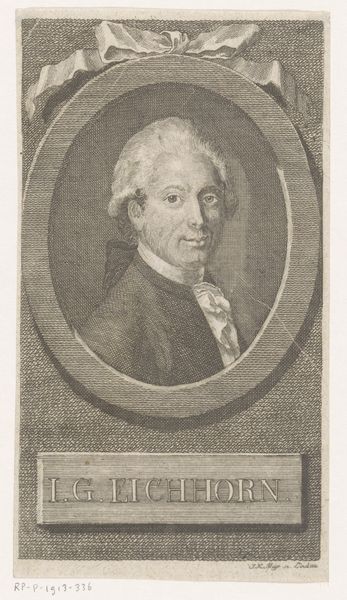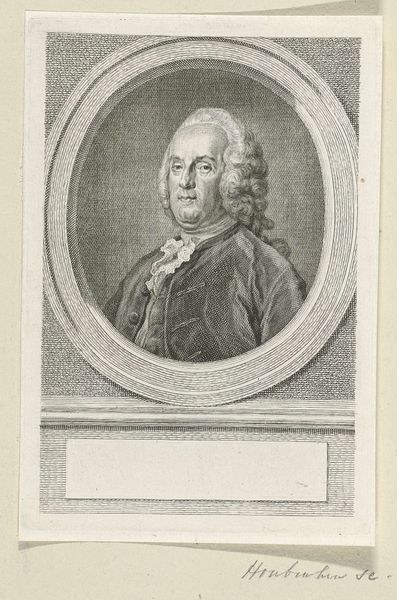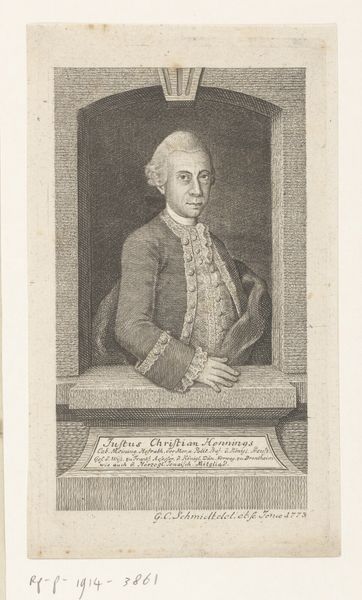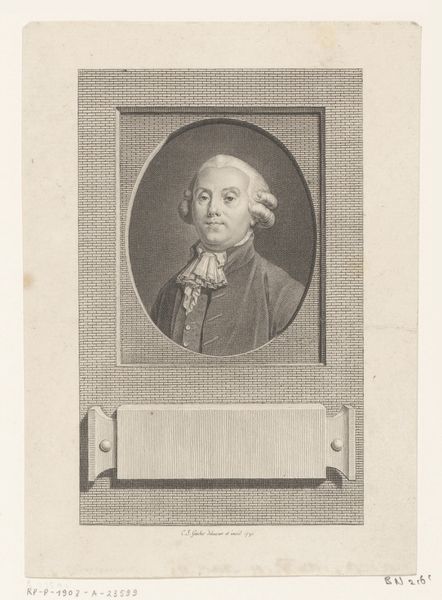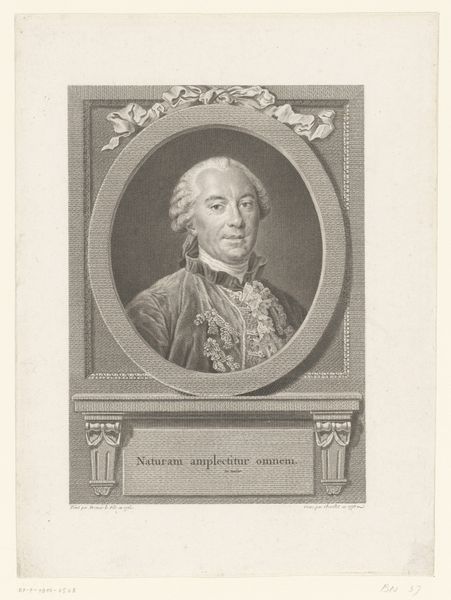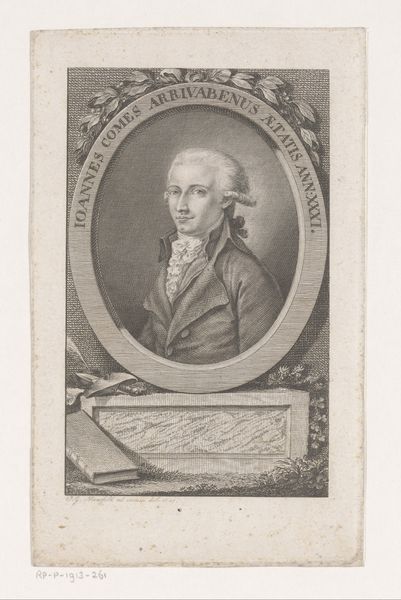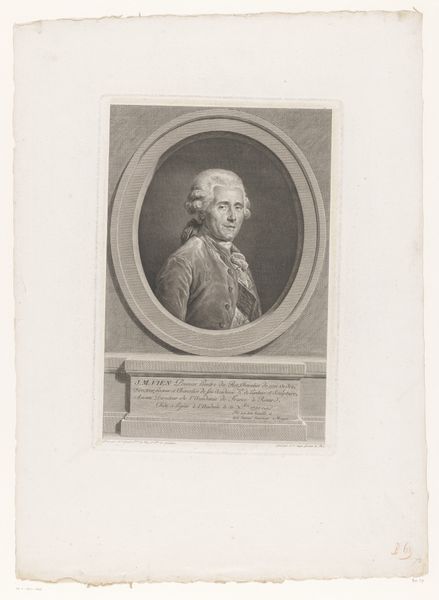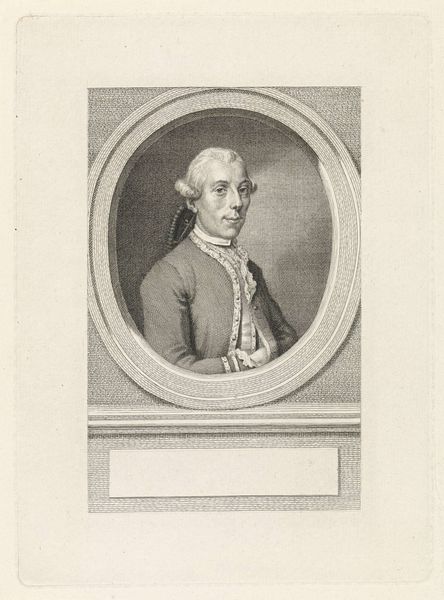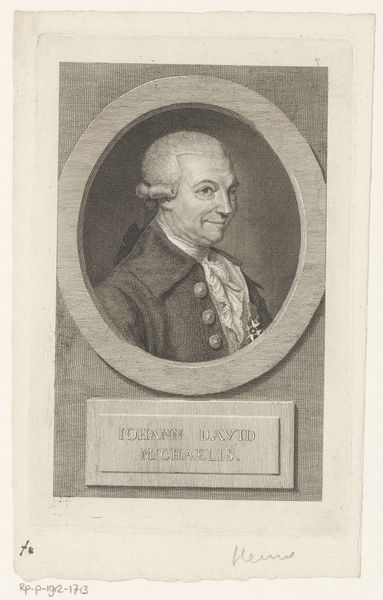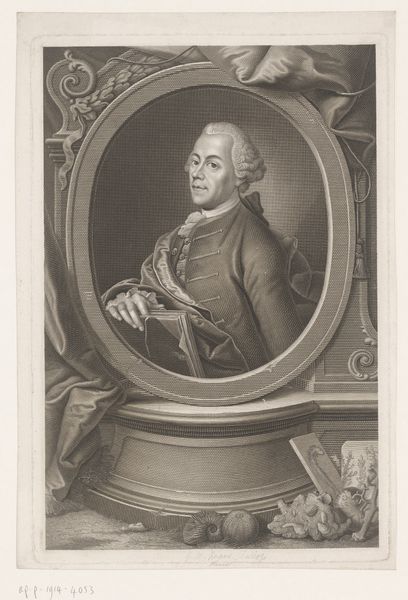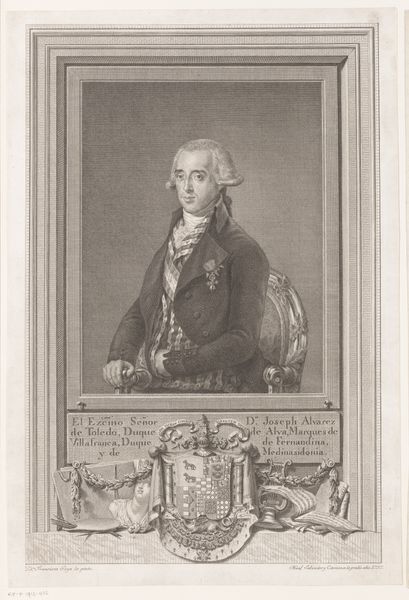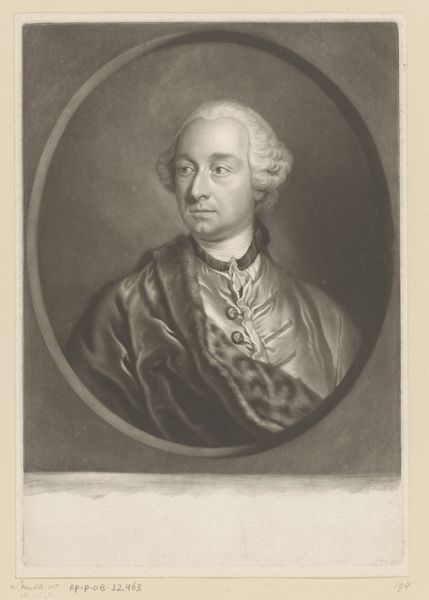
print, engraving
#
portrait
#
neoclacissism
# print
#
history-painting
#
engraving
Dimensions: height 200 mm, width 123 mm
Copyright: Rijks Museum: Open Domain
Lambertus Antonius Claessens created this print of Jacques Necker using a technique called line engraving. It’s a meticulous process, where the artist uses a tool called a burin to carve lines directly into a metal plate. Look closely, and you'll see how the varying thickness and density of these lines create the illusion of light and shadow, giving Necker’s face its form. This wasn’t just a feat of technical skill; it was a way of making images that could be reproduced and distributed widely. Prints like this played a key role in shaping public opinion, especially during times of political change. Consider the amount of labor and skill involved in producing just one of these plates. It speaks volumes about the value placed on craftsmanship and the power of images in the 18th century. By appreciating the materiality and making of this print, we gain a deeper understanding of its cultural and historical significance, beyond simply the image it portrays.
Comments
No comments
Be the first to comment and join the conversation on the ultimate creative platform.
